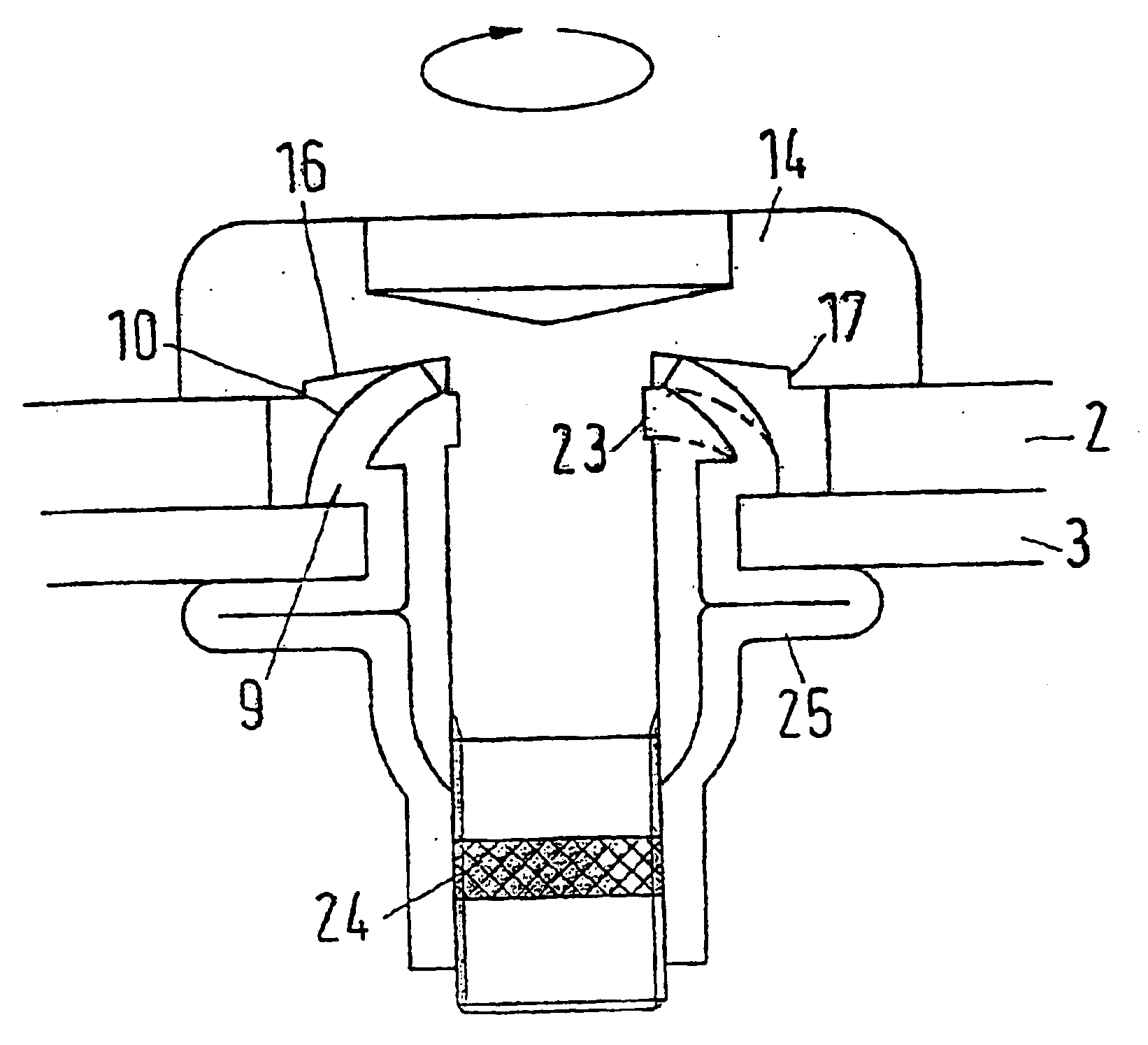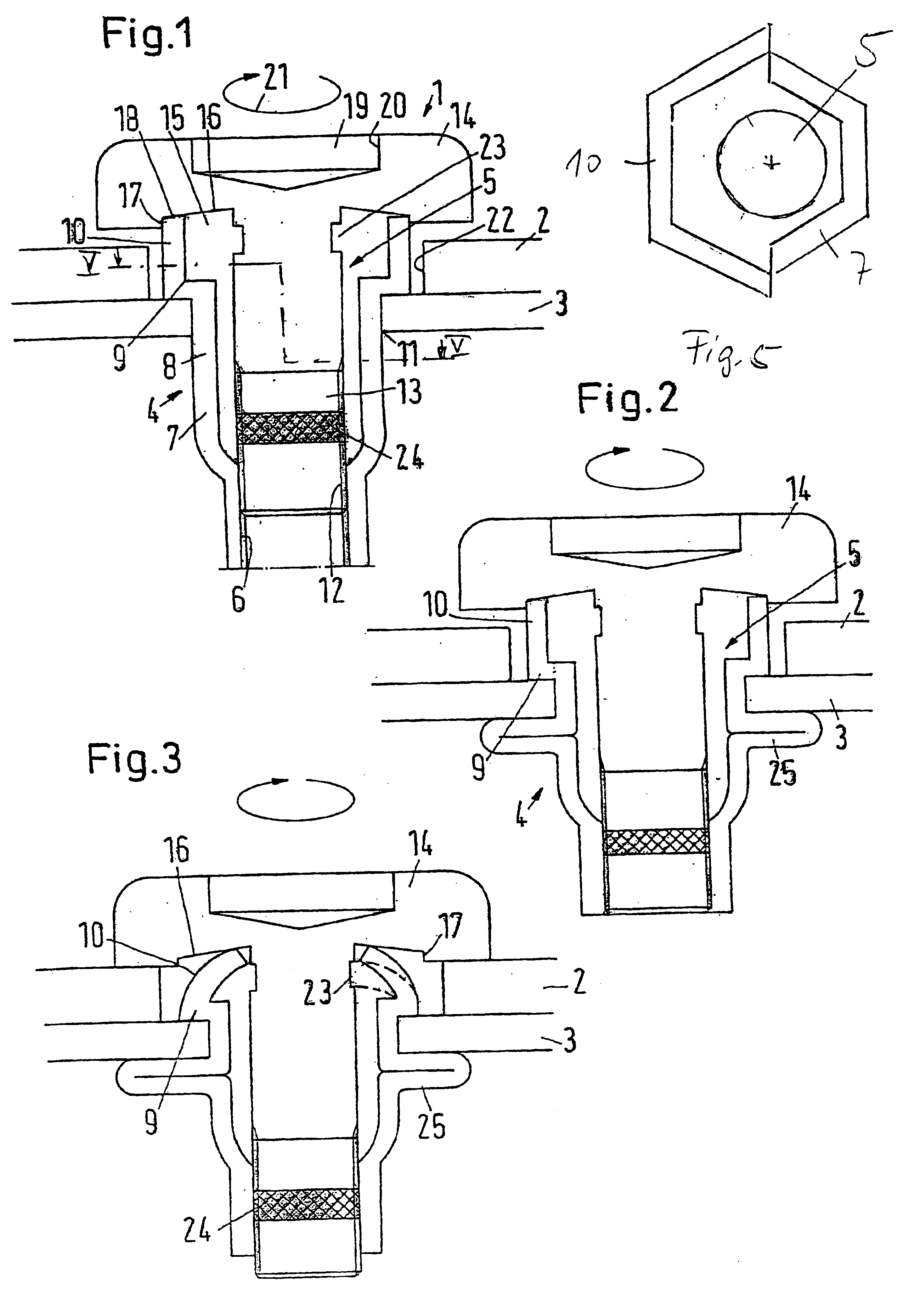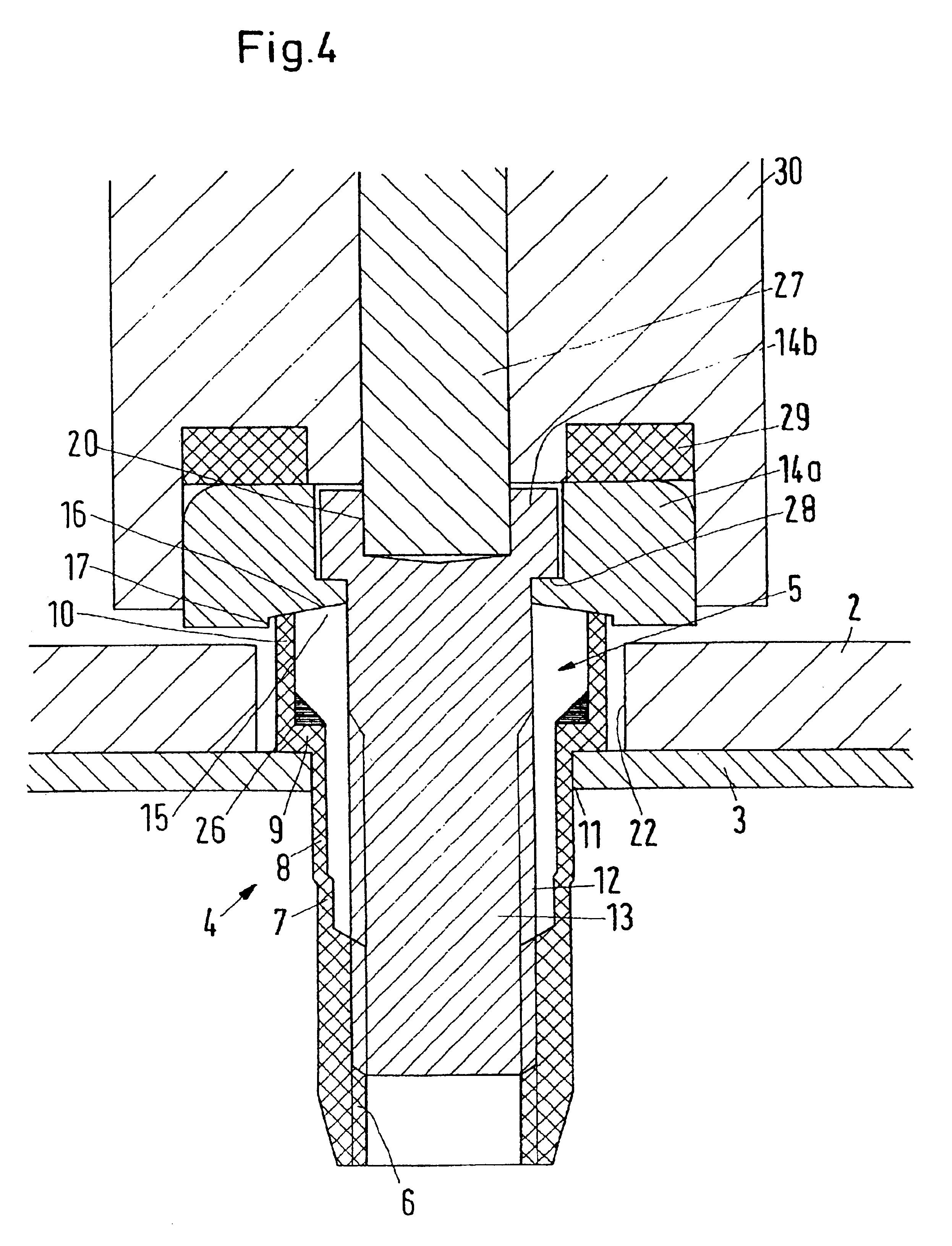Blind rivet nut and fastening unit
a technology of rivet nut and bolt, which is applied in the direction of threaded fasteners, fastening means, dowels, etc., can solve the problems of no longer releasable parts, consequential damage, and transmission of torque for tightening bolts to the component to be fastened, so as to simplify the releasable fastening of components
- Summary
- Abstract
- Description
- Claims
- Application Information
AI Technical Summary
Benefits of technology
Problems solved by technology
Method used
Image
Examples
Embodiment Construction
[0046]A fastening unit 1 for fastening a component 2 (also referred to as a “workpiece”) to a sheet metal 3 comprises a blind rivet nut 4 and a bolt 5. “Sheet metal” in this context means not only sheets made of metal, but also correspondingly thin members made of other materials such as plastic, wood or the like, in which a thread is required for making a releasable connection, which sheets, however, are too thin or too weak to allow a thread being produced therein.
[0047]The blind rivet nut 4 comprises an internal thread 6 which is arranged at the lower end of a shank 7. The shank 7 comprises a deformation zone 8 above the internal thread 6. Above the deformation zone 8 the blind rivet nut 4 comprises a set head 9. The set head 9 comprises an extension 10 which extends upwards, that is, is located opposite the side of the set head 9 on which the shank 7 is arranged.
[0048]The direction information “top” and “bottom” refers to the view of the drawings and serves to simplify the descr...
PUM
 Login to View More
Login to View More Abstract
Description
Claims
Application Information
 Login to View More
Login to View More - R&D
- Intellectual Property
- Life Sciences
- Materials
- Tech Scout
- Unparalleled Data Quality
- Higher Quality Content
- 60% Fewer Hallucinations
Browse by: Latest US Patents, China's latest patents, Technical Efficacy Thesaurus, Application Domain, Technology Topic, Popular Technical Reports.
© 2025 PatSnap. All rights reserved.Legal|Privacy policy|Modern Slavery Act Transparency Statement|Sitemap|About US| Contact US: help@patsnap.com



